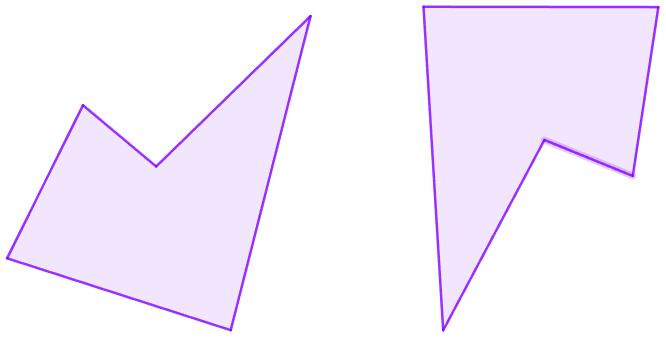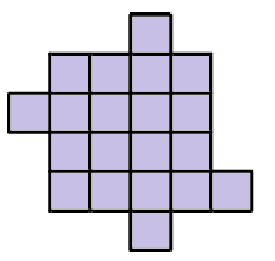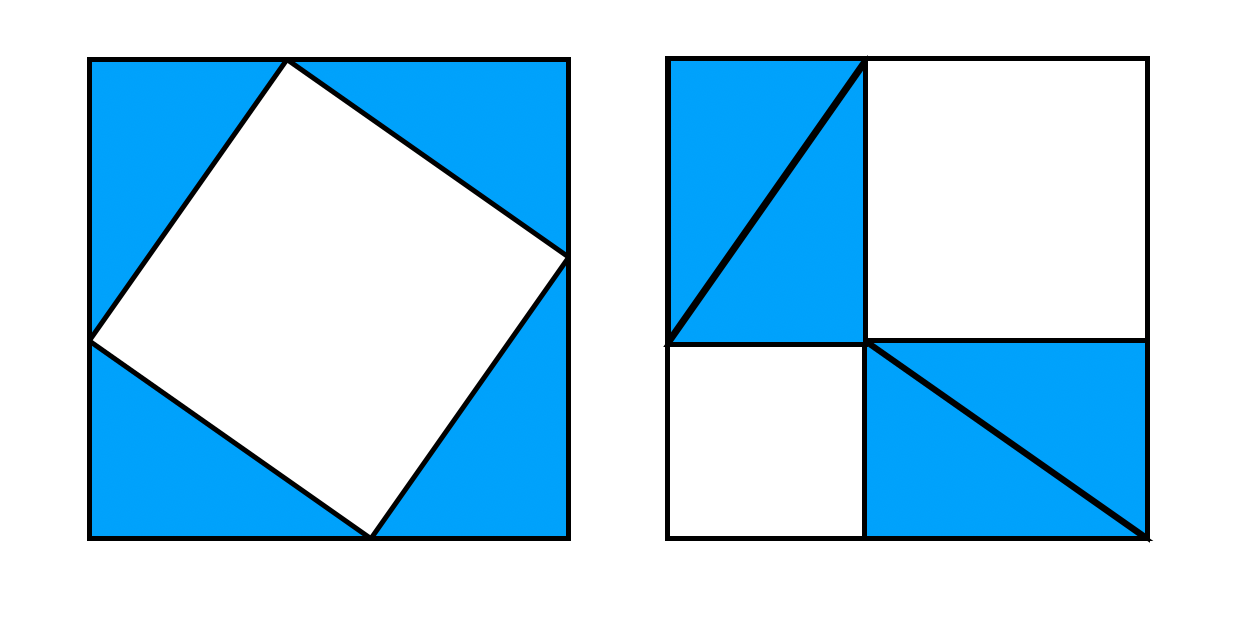Problems
Remember that two shapes are congruent if they are the same in shape and size, even if one is flipped or turned around. For example, here are two congruent shapes:

Cut the following shape into four congruent figures:

A cube net is a 2D shape that can be folded into a cube. For example, in the following diagram we show a cube net and the steps that fold it into a cube:

Imagine that you want to cover an endless floor with this cube net, so there are no gaps or overlaps, how would you lay them out? This is called covering or tiling the plane.
Cut a square into three parts and then use these three pieces to form a triangle such that:
All its angles are acute (i.e: less than \(90^\circ\)).
All its sides are of different lengths.
Jamie has a bag full of cards, where each card has a whole number written on it. How many cards must Jamie take from the bag to be certain that, among the cards chosen, there are at least two numbers whose average is also a whole number? Recall that to calculate the average of two numbers, we add them together and then divide by two.
The Pythagorean Theorem is one of the most important facts about geometry. It says that if we have a right-angled triangle (i.e: it has an angle of \(90^\circ\)), whose longest side measures \(C\), and its other two other sides measure \(A\) and \(B\):

then \(A^2+B^2=C^2\). There are many proofs of this fact, and some involve dissections! Let’s have a look at the following two ways to dissect the same square:

Can you explain how these dissections prove the Pythagorean Theorem?
Seven Smurfs live in seven mushroom houses. There is a tunnel between every pair of houses, so from any house you can walk to any other house. One of the Smurfs, Clumsy, starts walking from his house, but he must not use the same tunnel more than once. He keeps walking until he reaches a house where all the tunnels have already been used. Where will Clumsy’s journey end?
A battle of the captains was held at a maths battle. The task was to write the smallest number that is divisible by \(60\) and it’s digits are only ’\(1\)’s or ’\(0\)’s. What is the answer?
Welcome back from the summer holidays! We hope you’re rested and ready for an exciting year of problems. Today we’re going to dive right into our first topic with a fun game called “Lights Out."
Imagine a grid of square buttons. Each square has a light that can be ON or OFF. When you press a square, that light flips, and so do the lights directly above, below, left, and right. In today’s pictures, dark blue means ON and light blue means OFF. If you want to try it at home, search “Lights Out (game)” on Wikipedia for an interactive version. It may be useful for some of the harder problems.
Before we start, let’s quickly define two key words:
A light pattern is just which lights are ON or OFF on the board.
A plan is the set of buttons you choose to press to make a pattern. In Examples 1 and 2 we’ll see why a plan only needs to say which buttons are pressed: the order doesn’t matter, and each button is pressed either once or not at all.
Suppose that \(x_1+y_1\sqrt{d}\) and \(x_2+y_2\sqrt{d}\) give solutions to Pell’s equation \(x^2-dy^2=1\) and \(x_1,x_2,y_1,y_2\geq 0\). Show that the following are equivalent:
\(x_1+y_1\sqrt{d} < x_2+y_2\sqrt{d}\),
\(x_1<x_2\) and \(y_1<y_2\),
\(x_1<x_2\) or \(y_1<y_2\).
If Pell’s equation \(x^2-dy^2 = 1\) has a nontrivial solution \((x_1,y_1)\), show that it has infinitely many distinct solutions.